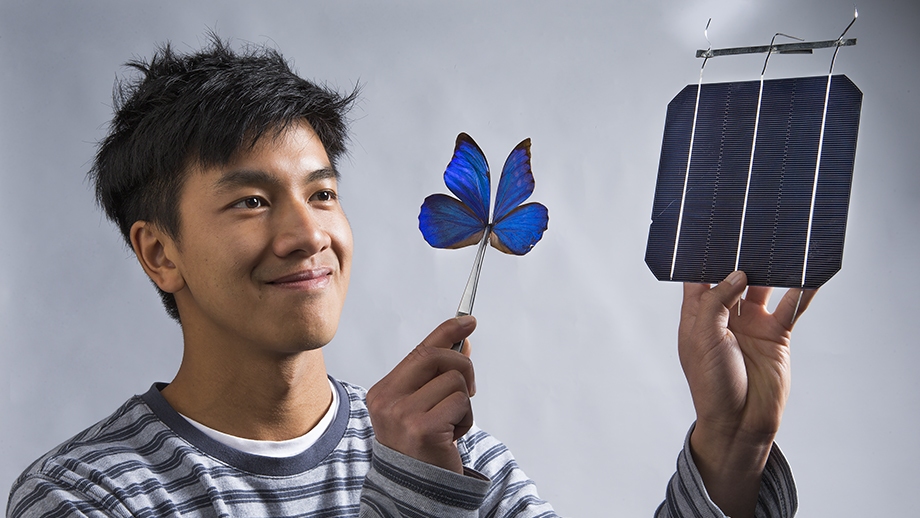Effective light management – control over factors such as scattering and reflection – is a proven way to boost efficiency in a solar module. Engineers at the ANU have developed a cone shaped nanostructure to control the direction of light, the material could be applied to high efficiency solar cells.
The team at ANU, led by Dr. Niraj Lal, said it had been inspired by the blue Morpho Didius butterfly, whose wings scatter light to produce a striking iridescent effect. Lal said that by producing a similar structure to the wings, the team was able to finely control the direction of light in a series of experiments.
“Being able to make light go exactly where you want has proven to be tricky up until now,” says Lal. “We were surprised by how well our tiny cone shaped structures worked to direct different colours of light where we wanted them to go.”
In April, ANU announced that it had developed a 26.4% efficient solar cell using a stacked configuration of perovskite and silicon. Lal stated that the new development could be applied to this cell, directing blue, green and ultraviolet light to the perovskite layer, and red, orange and yellow to the silicon layer.
“There’s a whole bunch of potential new applications using our light control technique, including next generation solar cell technologies,” continues Lal. “Scientists can greatly improve the efficiency of solar cells with effective light management.”
Popular content
ANU also points out that the technique could have further applications, particularly in energy efficient buildings, thanks to the potential to control how much light and heat can pass through a window.
“Using our approach, a window could be designed to be transparent to some colours, while non-see through and matt textured for others,” says Lal. “So there are some very cool applications in architecture.”
Lal was also keen to stress that the technique could be scaled up and does not require prohibitively expensive technology: “These intricate nanostructures grow and assemble themselves – it’s not by precise control with a tiny laser or electrons.”
This content is protected by copyright and may not be reused. If you want to cooperate with us and would like to reuse some of our content, please contact: editors@pv-magazine.com.



1 comment
By submitting this form you agree to pv magazine using your data for the purposes of publishing your comment.
Your personal data will only be disclosed or otherwise transmitted to third parties for the purposes of spam filtering or if this is necessary for technical maintenance of the website. Any other transfer to third parties will not take place unless this is justified on the basis of applicable data protection regulations or if pv magazine is legally obliged to do so.
You may revoke this consent at any time with effect for the future, in which case your personal data will be deleted immediately. Otherwise, your data will be deleted if pv magazine has processed your request or the purpose of data storage is fulfilled.
Further information on data privacy can be found in our Data Protection Policy.